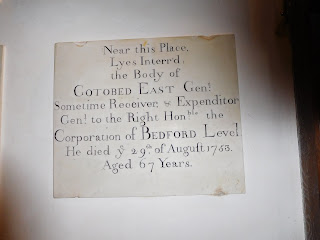Aha! A post without pictures - the camera battery was exhausted.
First, Nancy in Alaska asks how many people would you meet on a Lake District walk? Well now, if you were to go to Keswick and head out to Cat Bells, you could easily find yourself queuing to go up some of the ascents on the walk. We do not like that kind of walking. But go round the back of Skiddaw, even on a fine Sunday such as the one we had, and you might see up to twenty walkers in the course of the day, but spread out over a huge landscape. Mid-week, in the obscurer parts of the fells, you can walk for hours without seeing anyone at all.
While we were in our rented cottage my Kindle ran out of power. I was not surprised to find a book by Arthur Ransome on the shelves. I must have read "Swallows and Amazons" longer ago than I care to remember. This one was "Secret Water", which is not set in Cumbria but down much nearer to us. I read it with the sort of immersive enjoyment which I recall so well from my childhood. Next, I tried "We Didn't Mean to Go to Sea." What a thrilling yarn! I have never had the slightest interest in sailing, but the narrative simply carries you along. Wonderful!
So, last Sunday, we booked ourselves train tickets for Manningtree, loaded the trusty bicycles on the train and set off for the Shotley Peninsula. In the books, "Daddy" has been appointed to some sort of role at Shotley, where there was a naval training school. It was the sort of day when acorns and conkers crunch underfoot. We rode through rolling countryside, noting how ribbon development had spread, and also how fast people drive on minor roads. Soon we reached the Royal Hospital school, a rather grand establishment.
Glimpses of sparkling water could be seen from time to time. We passed a series of fine old houses on our way down to Shotley Gate, the end of the peninsula. Suddenly, the container port of Harwich came into view on the right, with the cranes of Felixstowe over to the left. We sat right down by the water's edge to eat our sandwiches. My husband did a spot of bird watching along the shore.
We rode back inland, taking a detour to Pin Mill, which was thronged with people enjoying pub lunches. There were the boat yards and the yacht moorings mentioned in the books. On the way back my husband spotted something on the road. It was a slow worm, something neither of us have seen since childhood. He prodded it to shift it off the road, just in time before the next vehicle came through.
We cycled over Alton Water, but by now time was pressing so we took to the main road for the final stretch. Sadly, we were five minutes from the station when we saw the train pull in. No matter: we still had some spare supplies. Ransome is always keen to detail what his campers ate for each meal. I don't actually like milk chocolate, but he makes fruit and nut sound like ideal snack food. Twenty minutes on the next train and we were back on home turf, feeling that we had explored new territory.
This week it is Manningtree to Bures, following the valley of the Stour up past Dedham and Nayland. We'll see...






















































.JPG)